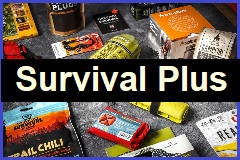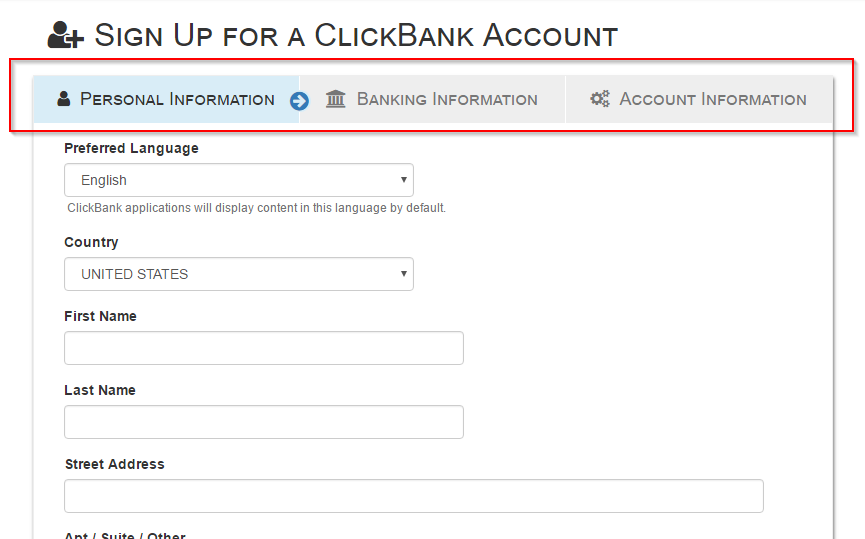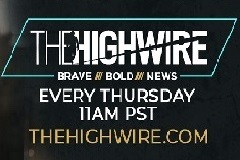 |
|||||
| Top 20 On-Line Business Home | |||||
| Affiliate Marketing: The Definitive Guide (for 2024) | |||||
|
Is 2023 is the year for you to learn how to make money online? Then you need to know the answer to this question: What is affiliate marketing? If you already know what affiliate marketing is, you probably know that people have made serious money with this online business model. But if you aren’t sure that it still works (or how to make it work for you), you’re in the right place. And yes, selling affiliate products is an awesome side hustle idea. This thorough step-by-step guide will answer all your questions so you can start making a living promoting other people’s products. If you’re as ready as I am, let’s dive in.
This guide goes deep, so we have broken it up into chapters to make it easy to find what you are looking for. Click a link below to jump to that part of the guide. What is affiliate marketing?Affiliate marketing is the process of earning money by promoting other people’s products. It’s a proven online business idea for getting started. As an affiliate marketer, you find and promote other people’s products. The owners of the product pay you a commission for every sale or lead you send to them. If you’re new to selling online, and you’re still deciding what business to start, you can use affiliate marketing to test your ideas and find your ideal customer base. At the same time, you’ll learn about internet marketing and start making money without the pressure of building your own products first. Then take what you learn and create and sell your own online courses. All you have to do is promote existing products and get paid. This performance-based system means the more successful your marketing efforts are, the more money you can make. To fully understand what is affiliate marketing and how it works, it is critical to know a few basic terms used in the industry. Learn more with our list of best business books of all time. Affiliate marketing terms: A definitionHere’s a list of the basic affiliate marketing terms that will help you understand the rest of the guide. Affiliate: Also known as an affiliate marketer. The individual who promotes the products or services to earn commissions. Merchant: The business or company that owns the product. Affiliate product: The product or service that affiliates promote to earn money. It is also known as an offer. Affiliate network: A third-party service that acts as an intermediary between merchants and affiliates. Affiliate networks connect merchants to affiliates and manage the products and payments. They also track sales and traffic. Amazon Associates is one example of a popular affiliate network. Affiliate link: A unique link used to track affiliate sales, created and managed by the affiliate network or the merchant. Once you choose a product to promote, you need to place links to those products on your website. Your affiliate link identifies those leads as yours so you can get commissions. Amazon Associates provides HTML coded links that can appear as text, image, or both when you copy them into your website. Here’s an example where I looked for a salad spinner to promote: First, I chose the product:
Then, I can simply copy the HTML into my site, or go on to “Build link” and get more options:
Now I can customize the way the link will appear on my site, then copy and paste the new affiliate link code:
Commission: The agreed amount that a merchant pays to an affiliate for every sale or lead. EPC: The Earnings Per Click (EPC) is the average amount of money affiliates earn each time someone clicks the link for the product. Higher EPC means more earnings and vice versa. Unique clicks: Unique people who clicked your affiliate link. If the same individual clicks your affiliate link three times, it is counted as one unique click. Raw clicks: All the clicks that your affiliate links receive. A person who clicked your affiliate link three times is counted as three raw clicks. Cookies: A cookie is a text file that assigns a unique ID to every individual who clicks an affiliate link. It’s saved within the web browser of the visitor and identifies them as your customer for a specified amount of time. If your customer returns to the merchant’s website and makes a purchase later, you still get the commission, even if the customer didn’t use your affiliate link the second time. Cookie expiration: The date when the cookie expires on the visitor’s web browser. It is defined by the affiliate network. For instance, some affiliate networks have a cookie expiration period of 30 days. If an individual arrives at the merchant’s website through your affiliate link but doesn’t make a purchase right away, they will still be tracked as your customer if they purchase the offer within that 30 day period. Conversion: When a potential customer takes the desired action, it is referred to as conversion. For example, you earn a commission for every sale, conversion takes place when a potential customer makes the purchase. If you earn a commission for every lead, the conversion could be the moment a customer provides their email address to the merchant or completes an online form. How affiliate marketing worksNow that you have an understanding of the basic terms, you can learn exactly how it all works. It’s a 5-step process:
Here’s a visual walk-through from Sugarrae to show you what the process looks like in action:
Click here to view a larger version. [Image provided courtesy of the Sugarrae affiliate marketing blog.] CHAPTER TWO: Finding the right affiliate programsThere are hundreds of affiliate networks out there. When you know what type of products you want to promote, it’s easy to find options. Some of the leading affiliate networks are:
These make up only a tiny fraction of available networks. With so many options, how do you choose? There are several important criteria. Before you register and start selling, ask yourself these questions about the networks you are considering: Do they have products related to my content?The topic of your website will be the primary factor in which type of products you will sell. You need to find products that will appeal to your particular audience. Make sure the network you register with gives you access to products in your chosen area. For example, if you are starting a blog about parenting, make sure the network has products that parents would need or want to improve their parenting or to purchase for their kids. If you are blogging about training rabbits, the network you choose should offer products that rabbit-owners (and rabbits) need or want.
That’s why it is important to make sure your first affiliate network provides you with a variety of product offerings that will appeal to your specific visitors, with various price points. Will your visitors feel comfortable buying?When your visitor clicks on an affiliate link, you are sending them elsewhere to complete the purchase. Reputation and trust are big factors in the decision to click the “buy” button. If the network or merchant site doesn’t seem like a place you would feel comfortable entering your credit card information, don’t send your visitors there. You want to make sure the affiliate network you choose has a good reputation so you can confidently make recommendations to your audience. Do they have tools and resources that are easy to use?Especially if you are new to online business, you need to make sure you will be able to integrate the products easily into your marketing messages, either on your website, in emails, or with ads placed on the internet. Many networks offer customizable banners, product feeds, and link generators you can copy into your site exactly how you want them to appear. Consider what kind of visuals you want on your site, and the ease of integration based on your technical abilities. The last thing you want to do is get bogged down with technical issues before you even get started. What is the affiliate marketing payment structure?Your primary goals are helping your customers and getting paid for your efforts. You need to know how the getting paid part works before you sign up. Look into the schedule and method of payment delivery, to make sure the system will work for you once you start earning. For example, some affiliate networks might not be able to do direct bank transfers to your country. They might mail you a check, use PayPal, or some other method. Some affiliate networks have variable commission rates, depending on how much you sell. Some provide bonuses or promotions as an extra incentive to promote certain products. Merchants and their products will have different payment structures too, which we’ll talk about in more detail in the next chapter. Creating your first affiliate accountNow that you’ve researched some options, choose an affiliate network and create a free account. ClickBank has a quick and easy sign-up process that you can complete in just a few minutes. Here is how to start making money selling products through ClickBank:
How to choose your first affiliate productAfter you’ve registered with your preferred affiliate network, start looking for the right products to promote. Beginners to internet marketing often choose digital products, like ebooks and courses, because they pay higher commissions and are easier to sell. ClickBank has a massive library of affiliate products in many categories, but it’s particularly useful for digital products. Amazon Associates, on the other hand, is a physical product affiliate network. The average commission per product at Amazon Associates is around 10% while ClickBank is around 25%. Big difference, right?
If your customers are not enticed to buy what you’re promoting, you won’t be able to make sales. To get ideas and choose the best affiliate products to sell, put your customers first. Find the perfect affiliate product: Brainstorm and validateThe process of choosing your first affiliate product involves three simple steps: narrow down product ideas, choose a single product, and then validate.
To brainstorm affiliate product ideas, there are several factors to consider. Find as many answers to these questions as you can before you move on to the validation stage. Take time to dig deep on these — sometimes your most creative ideas come after you get all the bad ones out of the way.
The best way to find out what your customers need is to survey your target market. Ask people on social media what their challenges are, and what they are currently doing to solve them.
Of course, surveys and asking for customer feedback is great, but the responses that matter most are when people decide to buy your product. If people are willing to spend money on that product, it means they want a problem solved. Can I be straight up with you? I love affiliate marketing, but not just because you can make initial sales.
By testing which affiliate products resonate with your audience, you can learn what kind of products may be big sellers if you eventually decide to create your own. Because you don’t want to overwhelm your audience with sales pitches, take your time choosing what products to recommend. Ways to validate an affiliate product before you pitch it to your audience:
Red flags to avoid in choosing an affiliate productLet’s assume you joined ClickBank and are looking for a weight loss diet plan to promote. A diet plan to help your audience lose weight naturally. You have to review all the diet plans critically. Here’s what to look for: 1. The sales page of the affiliate productDoes it look overly promotional? Does it make huge promises and wild claims? Does it sound too good to be true? Does it look like a sales page that converts? If so, this product might not be appreciated by your target audience. You want to be sure you are sending your valued customers only to product pages that will appeal to them. If the look and feel are not right for your market, they will not feel comfortable enough to click the buy button. 2. Reputation of the affiliate productCheck the history and reputation of the merchant. Find out if they have a history of providing quality products, following through on promises such as money-back guarantees, and if they are generally seen as a good company to deal with. While you have to make sure your customers will be taken care of, make sure you don’t get burned yourself. Find out if the company has a solid history of paying their affiliate commissions. The last thing you want to do is spend time and resources selling a product that you won’t be paid for. 3. The product statisticsThere are some important numbers to look at that will help you decide if a product is worth promoting. In this example of a product on ClickBank, you can see a stats section showing you all of the metrics you need to know.
Initial $/sale is the average amount that you’ll earn per sale. Avg %/sale is the average commission rate (in percentage) earned from all the sales of this product. Avg Rebill Total is the total recurring amount that you’ll earn. Avg %/rebill is the average commission rate of the recurring products. Grav (for gravity) is a number that indicates how well and how widely a product is being sold. Gravity is a calculation that takes into account the number of affiliates who have made a commission in the last 12 months, how recently the sales were made, and the number of refunds requested. You can read more details about how ClickBank calculates gravity here, but all you really need to know to get started are some simple guidelines. Look for products with gravity between 20 and 100. This range tells you that a product is selling well and customers are getting value from it. Grav less than 20 could be a red flag. Either the product’s sales page isn’t working, or it’s a new product that hasn’t been tested enough yet. Grav higher than 100 is also a potential red flag. High gravity means so many affiliates are promoting the product that you could have a hard time competing. 4. Big brands already promoting the same productWith a quick google search of the product, you will find out if there is a well-known competitor promoting the same product. Differentiate yourself by promoting products that your customers won’t necessarily see elsewhere. Affiliate marketing commission structuresThere are several ways you can earn money with affiliate marketing. Familiarize yourself with these structures before you jump in promoting a product, so you know what to expect in the short term and the potential for recurring income and growth. Depending on the type of product and the marketing strategy of the merchant, these are the most common ways you will get paid:
One-time commissionThis is the most common structure. With each sale, you get paid. You’ll receive the commission once and that’s all. This is the model that Amazon follows. When you promote an Amazon affiliate product, you’ll be paid for the product once, but not for any recurring billings. Recurring commissionsSince passive, recurring income is the holy grail of internet marketing, competition is tough with products that pay affiliates every month. Even so, it’s worth looking at these products if they are a good fit for your audience or target market. A recurring payment structure means you get paid on a recurring basis. This mostly works with subscription-based products and SaaS (software as a service) companies. For instance, AWeber pays affiliates on a monthly basis, since new customers pay for a monthly subscription. Cost Per Action (CPA)Cost Per Action is a great strategy for beginners because there is no selling involved here. You only have to generate leads. Every time a visitor completes an action like submitting their email address, downloading a file, or registering with a website, you get paid. PeerFly is a leading CPA network.
Here is an offer from PeerFly that pays $1.44 for every new email submission.
CPA is great for beginners because you don’t have to convince someone to buy a product, which is much harder than asking them to complete a form. Of course, the payment per action is usually much smaller than a sales commission, so you’ll need higher numbers to make it worthwhile. Promoting affiliate products and making salesNow that you’ve researched affiliate programs and chosen a product, it’s time to start selling. Many beginners struggle with this part. You want to have a successful business, but you don’t want to feel like a pushy salesperson. You don’t know where to start, and you don’t have a degree in marketing or a big budget. You don’t need any of that.
Many successful affiliate businesses have been made exactly this way, and you can do it too. First, here’s a walkthrough to get the link you will use to promote the product and start making sales, using ClickBank as an example: Login to your ClickBank account and click Marketplace.
This is where you’ll find all the affiliate products available in the marketplace. Choose a category from the left menu, and find your product.
Once you’ve chosen a product, click Promote.
Click Create. Enter a Tracking ID that will help you track clicks individually for this affiliate link.
Copy the link. This is your affiliate link. You will need to place this link wherever you talk about this product to potential customers, so keep it somewhere you can easily find and copy it. The Tracking ID is a way for you to create more than one link to the product for different uses. Tracking ID’s are helpful for evaluating which of your promotional methods are performing best. As you promote more products and try different ways to reach customers, you will have many links and tracking ID’s. Stay organized by starting a text file or spreadsheet to store affiliate links, tracking ID’s, and information about how and where you are using them.
Once you’ve created the affiliate link, it’s time to start selling. Let’s talk about some different ways you can market your affiliate products. If you already have a good readership on your blog, you have a head-start. You can easily add product reviews to your publishing schedule. You’ll need to learn how to write a product review that’s informative, useful, and persuasive. Be mindful of maintaining the trust of your readers, but don’t be afraid to ask them to make a purchase. You’ve done your research and should feel confident that the affiliate product will genuinely help your audience.
Another option is to set up ads directly to the product on your site. Depending on the look of your site, you may or may not want sidebar ads or banners. If you have a decent budget to invest, you can start to advertise with Google AdWords, Facebook, and other paid services. You can simply create ads enticing people to click through directly to the sales page for the product. All of these methods can work. But for long-term success, the best way to promote products is directly emailing your target audience. Let me tell you the basics of getting started with affiliate marketing through email. Email marketing for affiliate salesWith new platforms and marketing gimmicks competing for your attention, it’s easy to overlook the simple, yet very effective method of direct email. With traditional advertising, you might purchase ads in various locations on the internet, radio, print media, or television. You would then hope that the right people see your messages and buy your product. While this approach can work, there is a much more direct and powerful way to reach people — email. Here is the basic formula of successful email marketing:
Email marketing works well for several reasons:
How to build your email listTo start collecting email address and building a high-quality list, you first sign up with an email service provider. This is where you’ll make a sign-up box to place on your website. I recommend ConvertKit because it’s the best email service I’ve found. You can get started with ConvertKit here. With ConvertKit, you can add opt-in boxes to your site, set up free email courses, sort subscribers, and send automated emails to your list. Click here to get a 1 Month Free Trial at ConvertKit and start building your list today. Your first offer: A lead magnetNobody hands over their contact information without good reason. Your sign-up page must offer something valuable and enticing to customers in exchange for signing up to your email list. A lead magnet is something you give to people when they sign up. This is the offer that will attract the right people to your list.
When you deliver value instantly with a great lead magnet, your new sign-ups will be eager to continue getting value from you by reading your emails. As you build the relationship, your email readers will trust that your product offerings will also deliver value. Some examples of a good lead magnet are:
Here are a few guides to help you get started with lead magnets and sign-up pages:
Once you’ve got your lead magnet and sign-up page ready, you can start sending traffic to it. Generating traffic to your lead magnetThere are several ways to generate traffic, but these two are a great place to start. Pay Per Click (PPC)Facebook, AdWords, and Bing are all great places to get paid traffic. Of course, you have to know what you can afford to spend. To figure this out, start by investing a small amount and testing out your lead magnet page. Figure out how many people who click through to your page actually sign up. This is your conversion rate. Then figure out how many people go on to buy your affiliate offer once they’ve signed up and started receiving your emails. This is the conversion rate for your email sign-up page. Then figure out how many people go on to buy your affiliate offer once they’ve signed up and received your email sequence. Driving traffic with PPC example: 100 people see your Facebook ad and click through to your lead magnet offer. 35 of those 100 people sign up for the lead magnet, and join your list. 5 of those 35 people buy your affiliate offer. You make $25 commission per sale, for a total of $125. Conclusion: You’ll make $125 for every 100 people that click on your Facebook ad. This number tells you the upper limit of what you can spend on PPC traffic to break even. Spend less, and you’re making money. If you can improve conversion rates, you can make more money from the same ad costs. Try tweaking your sign-up page or changing your lead magnet to see what works best. Content MarketingWriting and publishing articles, guides, or reviews on your blog is another way to generate traffic to your lead magnet offer. There are several advantages to this method, primarily that it’s free. As long as you do the writing and editing, you can build up a catalog of informative and helpful articles over time for little to no cost. Also, readers that find your blog will have plenty of opportunities to get value from you, enhancing the relationship of trust. Content marketing is effective, but it takes longer to generate traffic this way versus paid ads. As you get started, you should try to learn the basics of good SEO (search engine optimization), paritcularly on-page optimization and SEO content writing. Or, you can follow the Backlinko method of getting on the first page of Google. The only way your ideal customers will find your website is by using the right keywords and making sure the content is relevant. Then you have to keep at it. The more useful your articles are, the more people will share and link to your site. You can also use your favorite social media channel to get eyes on your affiliate offers. What to send your list to maximize your affiliate commissionsEverything we’ve talked about so far has been leading up to the critical step of emailing your customers. This is where you finally start to make sales and earn your affiliate commissions. The success (or failure) of your email sales funnel is the biggest factor in how much money you will make. I know you are excited to jump right in and start selling, but take some time to work on a sequence of emails that will provide value, build trust, and develop your relationship with new subscribers. Two factors to consider are frequency, and balance of content. How often people want to hear from you, and how many of your messages contain product offers. Don’t overthink it at first. The best way to find the right balance is by trying things out. Your audience will let you know when they don’t like what you are sending. They will unsubscribe. And this is fine. You will learn something, and you will get new subscribers. Here are some ideas to get you started with emailing your list:
Always put your readers first. Think about how each message will help them. When you include affiliate offers, focus on how your reader will benefit, not on the features of the product. Now that you understand what affiliate marketing is, how it works, and how to start making sales, I’ll tell you about the best tools to grow your affiliate business. Affiliate marketing toolsBelow is a list of some of the best tools that top affiliate marketers use. 1. Offer VaultOffer Vault is your best resource when you’re searching for the right affiliate network. It allows you to find affiliate networks based on a search query. What’s better is that it has a massive database of affiliate products. You can use the search bar to enter your product idea or choose from the list of networks. 2. OptinMonsterOptinMonster helps affiliate marketers create high-converting email opt-in pages with ease. Use it to help you craft the perfect landing page for your lead magnet offer, and get the most visitors signed up to your email list. 3. Thirsty AffiliatesThirsty Affiliates is the perfect affiliate link management platform for WordPress. Thirsty Affiliates helps you with a lot of things like cloaking links, tracking, auto keyword linking, and more. 4. VigLinkVigLink is a perfect tool for adding affiliate links to existing content automatically. VigLink can do it with a tiny piece of code for your entire website. Affiliate marketing FAQsDo you still have questions about affiliate marketing? Let me know! Here are some common questions people have about getting started with a new affiliate marketing business. Do I need a website to become an affiliate?You don’t necessarily need a website, but having one will make your life easier. It will also make the future of your affiliate business more secure. A simple website or a blog with a free theme will work. If you want to get a website site up and running fast, looking great, and working perfectly, I recommend StudioPress Sites. StudioPress Sites is a hosted WordPress platform that takes care of security, updates, and design so you can focus on making affiliate sales right away. One of the best things about having your own website is that it lets you build an email list. Having a database of potential customers that you can contact directly is the most valuable asset you can have. The other benefit of having your own website is that it provides a platform for content marketing, which is an excellent way to generate leads (and future sales). Some businesses rely on a Facebook page or Instagram account as their online presence. While these are great tools, they are best used as a way to get traffic back to your website. When you have your own website, you have control of your internet presence. You won’t be at the mercy of social media platforms that can change the rules at any time and can rise and fall in popularity. Get your StudioPress site today and start making money with your affiliate marketing business faster. How much money do I need to get started with affiliate marketing?You don’t need any money. You can use free marketing methods like social media marketing, and posting on forums to send traffic to your affiliate products. The amount of money you spend at the beginning depends on the marketing technique you choose. You can spend money a new website, which could save you time and headaches, or you can set up a free site yourself. If you promote affiliate products through Facebook ads, it will cost money. If you use Quora, it will be free. A combination of both free and paid promotional strategies will help you to reach more targeted customers and increase your earnings. How much can I earn per month?There isn’t an exact answer. There are affiliates who earn $10k a month and there are others who hardly earn $100 per month. The beauty of affiliate marketing is that there really is no limit to the amount you can earn. As you get established and try things out, you will learn the best places to find your ideal customers. You will learn how to tweak your offers until you find a winning pitch. And you will build your reputation as a trusted source of value for your audience. If you’re consistent and patient, you can build up to a full-time living over a few months from affiliate marketing. I don’t have any experience in marketing. Will affiliate networks accept me?Of course. You don’t need any experience to register with an affiliate network and to promote affiliate products. Anyone can do it. In fact, the only way to get experience is to jump in and get started. How soon can I make money with affiliate marketing?If you follow this guide, you can start earning in as little as a week. The important thing to remember is that long-term success depends on your ability to stick with it long enough. Because there is a lot of set-up to get started, including research, choosing products, and setting up your email system, you can get overwhelmed and discouraged trying to do it all at once. Set reasonable, achievable goals for what you want to get done each day toward for your business, and keep taking steps. Success in getting each step done will fuel your motivation to keep going until your first sale. Seeing your first commissions come in will be all the motivation you need to achieve the affiliate marketing business of your dreams. Wrapping Up… Choosing a business is totally a personal decision. You may find a lot of other possibilities, but coming up with some small business ideas that yield higher profits is little tricky. So, choose your passion from the above list and turn your dream into reality. |
|||||
| 💰 Bypass censorship by sharing one of these links: https://1realnews.com/20-ideas-07/ or https://box91.com/20-ideas-07/ or https://box127.com/20-ideas-07/ or https://box145.com/20-ideas-07/ or https://box154.com/20-ideas-07/ |
You can Work From Home |
||||
Update Daily

































